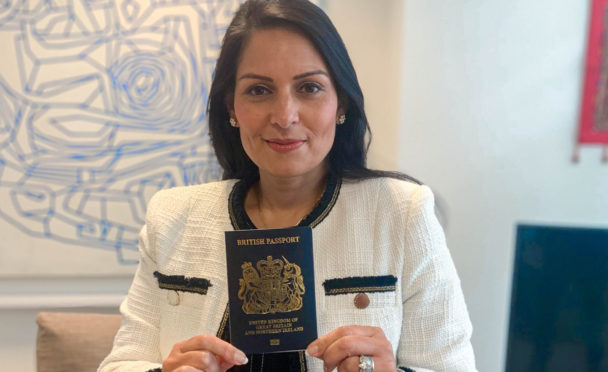
Blue passports will be issued for the first time in almost three decades from next month to mark Britain’s departure from the European Union.
Championed by Brexiteers, the new-look documents will replace the burgundy passports which were rolled out in 1988.
The contract to produce the passports was controversially awarded to French firm Thales, but the documents will continue to be personalised with the holder’s details in the UK.
The first new passports will be issued from the beginning of March, and by mid-2020 all new passports will be blue, the Government anticipates.
As well as the colour change, the back cover of the new passports will now feature embossed floral emblems of England, Northern Ireland, Scotland and Wales.
Home Secretary Priti Patel said that by returning to the “iconic” blue and gold design, the passports will “once again be entwined with our national identity”.
She said: “Leaving the European Union gave us a unique opportunity to restore our national identity and forge a new path in the world.
“By returning to the iconic blue and gold design, the British passport will once again be entwined with our national identity and I cannot wait to travel on one.”
The new passports are said to be the greenest and most technologically advanced yet, with new and updated security features to keep personal data secure.
Blue passports were first used in 1921, and remained the colour of choice until the UK joined the EU (then the European Economic Community) and a change to burgundy was later agreed to harmonise designs across member states.
Burgundy passports can still be used for travel until they expire.

Enjoy the convenience of having The Sunday Post delivered as a digital ePaper straight to your smartphone, tablet or computer.
Subscribe for only £5.49 a month and enjoy all the benefits of the printed paper as a digital replica.
Subscribe